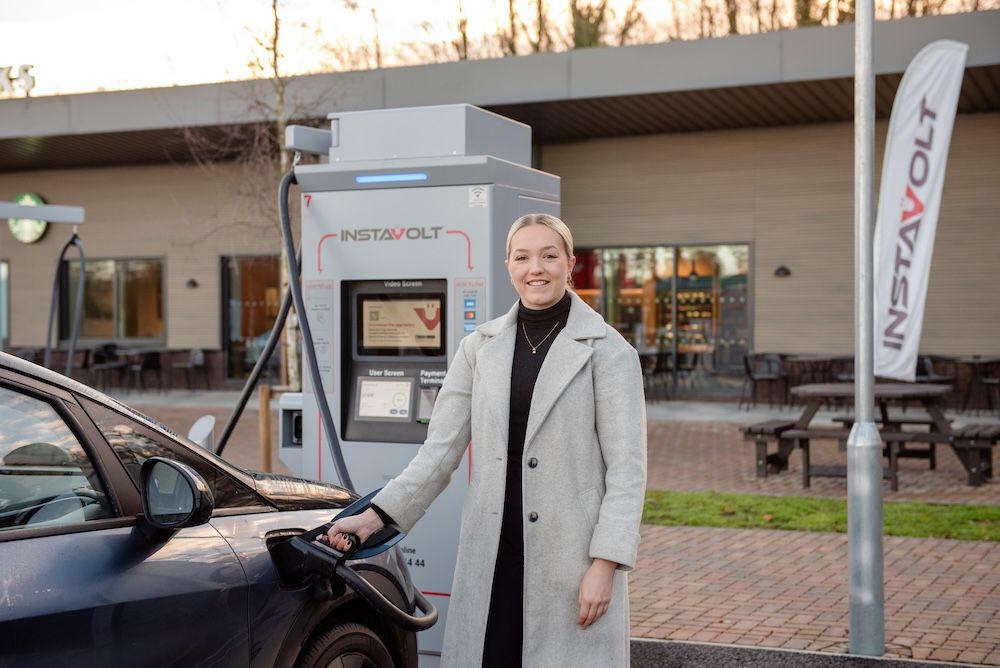Decarbonising transport and clean energy form a central element of the UK Government’s new 10 year Infrastructure Strategy.
The strategy outlines how £2.6bn capital investment will be provided to decarbonise transport from 2026-27 to 2029-30 to continue to support the rollout of electric vehicles and the required charging infrastructure, as well as encouraging innovation in hard to abate sectors like maritime and aviation.
Within the investment, the government is supporting the continued rapid expansion of national charging infrastructure and will allocate £1.4 billion to the Office for Zero Emission Vehicles (OZEV) to fund projects supporting the transition to zero emission vehicles, and £400 million to support further rollout of charging infrastructure.
For HGVs, the government is providing up to £200 million by March 2026, as part of the Zero Emission HGV and Infrastructure (ZEHID) programme. Over five years, the programme will build evidence to guide future investment in zero emission HGV technologies, with 54 initial infrastructure sites announced.
On energy, the government said it would work with Ofgem and NESO to reform the connections process. This will ensure that the right projects can connect to the grid when they are needed, with priority given to projects that align with the Clean Power 2030 target, it said.
It hopes that this will enable new renewable generation to connect sooner but also ensure there is capacity for wider growth and development – to support new housing and industry – it said.
A key element of the strategy is the Warm Homes Plan with a total of £13.2bn over the Spending Review 2025 period, including £5bn of financial transactions, and Barnett consequentials.
This investment will be allocated across schemes that support the rollout of heat pumps, alongside energy efficiency measures and other low-carbon technologies, such as solar and batteries. The government will work with the UK’s expert public finance institutions, including the National Wealth Fund, to support the delivery of the Warm Homes Plan, it said.
As highlighted by Transport + Energy earlier this week, the National Infrastructure and Service Transformation Authority (NISTA), will work with partners across government and industry to effectively implement the strategy across the whole of the UK. NISTA will periodically review the progress made and work with devolved governments to ensure that infrastructure strategy across the UK is joined up.
The majority of the funding has already been announced, including £1bn to carry out maintenance on key transport infrastructure, £590 million to start work on the Lower Thames Crossing, and £16 billion of new public investment will help build over 500,000 new homes. This government has also accepted all of the James Stewart Review’s recommendations on HS2.
The strategy aims to “provide the certainty and stability needed to attract investment, boosting British supply chains and jobs, and takes a joined-up view to improve planning and delivery across all types of infrastructure”, the government said.
These plans are backed by at least £725 billion of government funding over the coming decade, from which at least £9 billion will be allocated in 2025-26 to address the critical maintenance needs of health, education and justice estates – rising to over £10 billion per year by 2034-35.
Chancellor of the Exchequer, Rachel Reeves said:
“Infrastructure is crucial to unlocking growth across the country, but for too long investment has been squeezed. Crumbling public buildings are a sign of the decay that has seeped into our everyday lives because of a total failure to plan and invest.
“We’re not just fixing buildings – we’re enhancing public services, improving lives and creating the conditions for sustainable economic growth in communities throughout the UK.
“This will deliver the decade of national renewal we promised Britain, and fulfil our Plan for Change goals to kickstart economic growth, and build an NHS fit for the future.”
Becky Wood, Chief Executive Officer of NISTA, said:
“Strategic preventative maintenance based on longer-term plans is a more effective approach than making decisions in the absence of certainty about the future – and will ensure our vital public services remain resilient and fit for purpose.
“By approaching replacement and maintenance of our infrastructure in an informed and systematic way, we can target interventions effectively and plan properly for the future.”
Tracy Blackwell, Chief Executive Officer, Pension Insurance Corporation said:
“The government’s 10-year infrastructure strategy is a good step in the right direction – providing clarity, ambition, and commitment to long-term investors in UK infrastructure, like Pension Insurance Corporation.
“We welcome the clearer pipeline of projects and a renewed focus on social value, something that is of real importance for local people. The Government’s wider efforts on planning reform, transparent delivery bodies, and reducing the regulatory burden will supplement this new strategy – offering a much more investable environment across the UK.”
Lord O’Neill of Gatley said:
“The Strategy set out today is a serious plan for addressing the long-running challenges that have prohibited investment for years.
“The government needs to be transparent in how it selects its infrastructure investments to drive growth and this Strategy is a big step forward in doing that. I look forward to further detail on the government’s plans for Northern Powerhouse Rail.”
Keith Lawson, Executive Vice President, Jacobs said:
“By investing in public services, transport, and clean energy, we are not only addressing today’s needs but also laying the foundation for a resilient future. The combined efforts of the Spending Review, NISTA, and the 10-Year Infrastructure Strategy provide the stability, coordination, and long-term vision necessary for efficient infrastructure delivery.”
Henry Tufnell MP, Chair of the All-Party Parliamentary Group for Project Delivery, said:
“Our constituents rightly expect this plan to deliver secure local jobs, skills, and opportunities. That is what this strategy is centred upon. This transformation will provide the infrastructure that communities across the country need to thrive, whilst also creating good, well-paid jobs in the process.
“A long-term approach through new initiatives like NISTA and reviews of the Green Book will play a vital role in this process. I look forward to seeing the positive impact that this strategy will deliver.”
Image from Shutterstock








